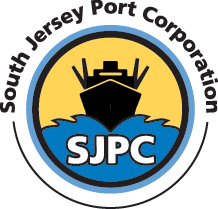In 1984, Dan Szustowicz, Sr. and his wife Mary founded D&M Transportation Services, Inc., a family owned and operated trucking company. D&M offers trucking and logistics solutions to South Jersey Ports’ terminal customers and other businesses others along the Delaware River and has been headquartered for 33 years at South Jersey Ports’ Broadway Marine Terminal in Camden, N.J.
D&M is a flatbed trucking company that services the supply chain in the Northeast region of the United States by transporting a wide variety of commodities (steel, aluminum, tin-plate, and wood) including coils, plate, tubing, lumber, and roofing materials. D&M offers full truckload and less than truckload (LTL) service for loads with either import or domestic origins. Their drivers are TWIC compliant and have extensive knowledge in handling a variety of materials including specialty cargo.
With a passion for quality control and customer service, D&M Transportation Services, Inc. has also developed itself as expert haulers of a variety of specialty steel cargos including high-quality rolled steel, flat plate steel, and structural steel beams.
Dan Szustowicz, Sr. was in high school when he started in the trucking industry. Over the ensuing decades, with the exception of a two-year stint in the U.S. Army, he mastered all aspects of the trucking and logistics industry from a management / operations perspective. He has done it all. He worked his way up from company to company mastering key aspects of trucking and logistics with increasing responsibility: inbound/outbound foreman, city dispatcher, and operations manager. In 1974, Ohio Fast Freight (a steel hauling carrier) hired him as a terminal manager, where he honed his operational skills and expertise in handling steel cargo.
“Ten years later, D&M (Dan & Mary) Transportation Services was born,” said Lisa Szustowicz-Colella, Dan Szustowicz’s daughter who was hired in 1987, soon to be followed by her younger brother, Dan Szustowicz, Jr. in 1994.
“We started out using owner-operators and once business grew, my father started to purchase his own equipment and hire drivers. He also obtained his CDL (Commercial Driver’s License) to back up our team. Dan Sr. would often jump into a truck, at the last minute, to deliver a shipment for a customer in need. He always kept an extra truck open for shipments like that.” said Lisa Szustowicz-Colella.
D&M’s equipment consists of late model Peterbilt tractors, flatbed Conestoga trailers and flatbeds with side kits. Their tractors are ELD compliant and equipped with GPS tracking, providing customers with real time status of their loads. Their fleet services a 150-mile radius of their home terminal in Camden, NJ. Being a tenant of South Jersey Ports has been key to D&M’s business growth within the region.
To give its import customers a greater geographic reach into the United States, the Szustowicz family also operates, D&M Services, Inc, a full-service transportation logistics company formed to service their customers’ growing transportation needs and to assist import customers with longer hauls out of the ports of New Jersey and Philadelphia.
“We have expanded to service other ports such as Baltimore, Savannah, New Orleans, Houston, as well as the Great Lakes ports,” explained Lisa. With a network of more than 5,000 contract carriers, D&M Services, Inc. provides customers with excellent transportation services at a reasonable cost. They offer full truckload (T/L), less than truckload (LTL), long-haul and container services.
“When we moved to South Jersey Ports Joe Balzano, then executive director, made sure we felt like were part of the port community. He helped to market us by introducing D&M to new customers and always included us in meetings with existing customers. We shared a common 24/7 work ethic and commitment to our customers. Mr. Saporito, his successor, has the same passion. Andy came in with a plan and immediately started improvements to both terminals. He’s making major upgrades to the infrastructure by upgrading the equipment and facilities,” said Dan Szustowicz, Jr.
For more information, please visit them on the web at: www.dandminc.com or call
1 (800) 220-3806 or (856) 963-0099.



